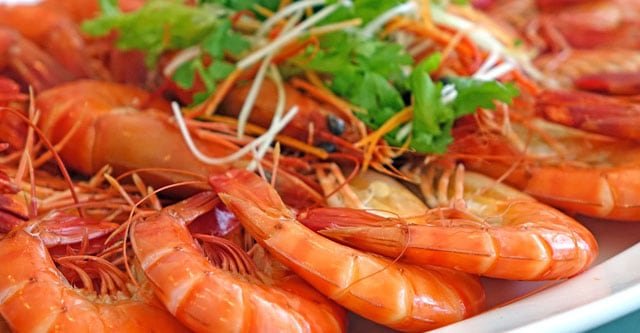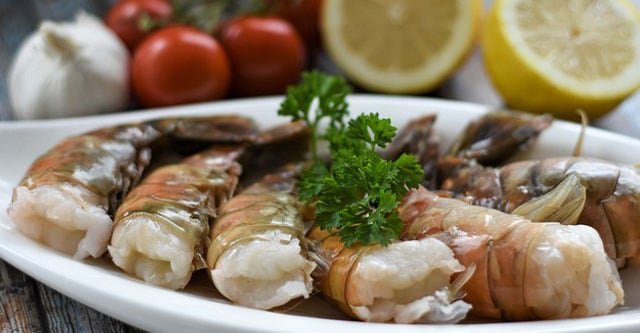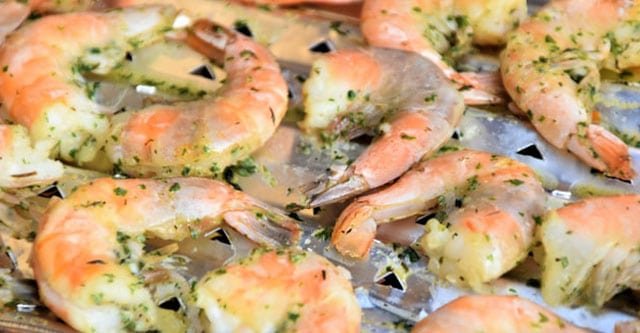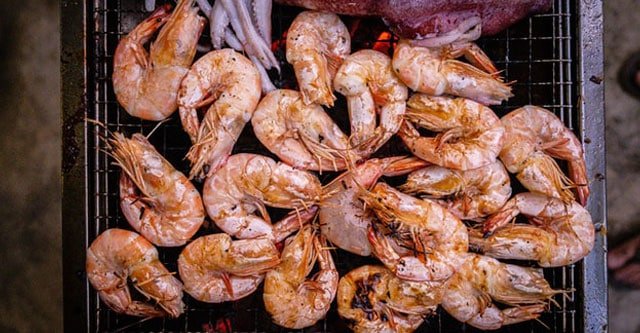Last Updated on November 21, 2020 by Dr Sharon Baisil MD
Choosing what to eat and what not, how much to eat, when and how, etc. are all questions that arise in a diabetic lifestyle. There are many restrictions that one has to consider. All the right information always comes in handy when it is about your health.
Today we are will discuss – Can diabetics eat prawn and shrimp? What are its benefits? What are its side effects? What are the limits, and many other issues? Let us answer all these questions in detail.
Can diabetics eat Prawn and Shrimp?

There are certain rules when it comes to including seafood in your diabetic routines. Before we get into discussing the greater details of Prawn and Shrimp for diabetics, let us answer the question directly. Yes! Shrimps and Prawns are said to be safe for diabetic individuals.
These seafood items are deemed good to be included in one’s diabetes-centered diet. They have values to add to one’s body and nutritional needs. At the same time, they do not have any harmful effects on blood sugar levels.
Shrimps and prawns are considered as safe foods for diabetic diets because of their particular carbohydrate composition. This seafood has very minimal, even nearly zero carbohydrates. Therefore, they do not affect one’s blood glucose levels.
All seafood is not safe for diabetic consumption. But the shrimps and prawns are on the healthier list.
Prawn and Shrimp are high in fats and protein. These are two very essential nutrients that can keep diabetic situations in control and out of danger.
Prawns and shrimps also provide the body with omega-3 fatty acids, which are very useful in maintaining health. It assists in keeping the heart away from any side-effects that diabetes can have.
Omega-3 fatty acids and good cholesterol found in this kind of seafood are great for managing diabetic health and its other symptoms.
The nutritional supplements present in shrimp and prawn also help to reduce risks caused by inflammation. It is beneficial in providing the body with anti-inflammatory nutrients. Moreover, it also supplies a variety of vitamins and minerals.
We will have a deeper look at the nutritional aspects of shrimps and prawns later in this article.
6 Tips to make shrimp and prawns safer for diabetics

Due to its very low carbohydrate content, shrimp and prawns are recommended seafood items for diabetic patients.
The glycemic index of both prawns and shrimps are very low. This is because of their minimal carbohydrate content. As per Glycemic measures, this is a good addition to one’s meal that does not lead to any extreme hypes in the body’s blood sugar levels.
Fats and proteins found in seafood can be advantageous to one’s diabetic health. Firstly, they are digested slower as compared to carbohydrates and do not contribute to sudden rises in the blood sugars. Also, they keep the body healthy and provide a source of constant energy.
The omega-3 fatty acids also assist in improving the sensitivity of insulin in the body. This is a very crucial part of managing one’s diabetic health. Insulin controls and maintains the release of sugars in the body and hence, any mishaps can lead to unhealthy levels of blood sugars.
It also makes the patient less vulnerable to cardiovascular problems.
Seafood is generally higher on fats and cholesterol. These can have certain ill-effects on the cholesterol if not moderated properly.
So, it is important to alter the quantities of shrimps and prawns as per one’s health and advised diet. What are some tips to make shrimp and prawns suitable for diabetics?
Here are some useful ways:
1. It is also very crucial to select and cook these seafood items in the right way. One can avoid the use of processed and canned seafood, and rather opt for fresher varieties. This helps to keep away the bad effects caused due to preservatives and chemicals.
2. If possible, look for prawns and shrimps that are wild-caught. Farm-raised varieties do not have the natural benefits and even have high amounts of toxins.
3. Avoid deep-fried shrimp or prawn recipes. They can add to the fat-content and raise the levels of cholesterol. Try to cook using less carbohydrate-rich ingredients.
4. You can aim at grilling, steaming, broiling, baking, etc. to have safer recipes in your diet.
5. Use lots of vegetables that are high in fibers, vitamins, and minerals. This helps to increase the total nutrition of the dish.
6. The best way to incorporate these is to not consume shrimps or prawns daily. The accumulation of fats can lead to a build-up in cholesterol.
Thus, their best for diabetic individuals depends on the quantity and quality of consumption. One should refer to a doctor for the best advice and suitable tips.
Glycemic Index of shrimps and prawns

The Glycemic Index is a very effective indicator to check whether a food is safe for diabetics or not. It helps to determine the effects that the number of carbs can have on the sugar levels.
Foods are ranked on a level of 0 to 100 and classified in the following way:
| Sl. No. | Category of Index | Rank |
| 1. | Low | 0 to 55 |
| 2. | Middle | 56 to 69 |
| 3. | High | 70 and above |
Now, let us find out what the Glycemic Index of shrimps and prawns are.
| Food item | Glycemic Index |
| 1. Shrimp | 0 |
| 2. Prawns | 0 |
Due to very absolutely none or very minimal amounts of carbohydrates, the glycemic ratings are said to be zero. Thus, these are among low Glycemic Index foods and are safe.
The glycemic load that measures the effect that a particular serving quantity of food will have is also an essential indicator. Just as we saw that prawns and shrimp have zero carbohydrates and are low Glycemic, therefore, they are even low in Glycemic load.
Daily Limits of eating Shrimps and Prawns in Diabetes
As we already discussed, prawns and shrimps are not to be consumed every day. There are certain restrictions that one must include when including these seafood items in their life.
The high amounts of cholesterol can lead to harmful effects on one’s heart health. It can also aggravate the pressure that is created on the heart as a result of diabetic side-effects.
Alongside good cholesterol, they also have bad cholesterol which can lead to extreme health issues. Thus, here are some safety limits that one should abide by:
- A limit of 150 grams of either prawn or shrimp per week is acceptable when it comes to one’s diabetics schedules.
- A healthy cooked recipe of prawn or shrimp twice a week is considered safe. Moderating the nutrients with healthy veggies is crucial.
Nutritional information of shrimps and prawns
Apart from being good for diabetics because of very minimum carbohydrates, these seafood items have many other advantageous nutrients. Let us have a deeper look at their nutritional composition.
- Shrimp:

| Sl. No. | Nutrients found in 100 grams of shrimp | Amount available |
| 1. | Calories | 119 |
| 2. | Carbohydrates | 1.5 g |
| 3. | Proteins | 23 g |
| 4. | Fats – Trans fats – Saturated fats – Polyunsaturated fats – Monounsaturated fats | 1.7 g – 0 g – 0.5 g – 0.6 g – 0.4 g |
| 5. | Cholesterol | 211 mg |
| 6. | Fiber | 0 g |
| 7. | Sodium | 947 mg |
| 8. | Potassium | 170 mg |
- Prawn:

| Sl. No. | Nutrients found in 100 grams of prawns | Amount available |
| 1. | Calories | 105 |
| 2. | Carbohydrates | 0.9 g |
| 3. | Proteins | 20.14 g |
| 4. | Fats – Saturated fats – Polyunsaturated fats – Monounsaturated fats | 1.72 g – 0.325 g – 0.663 g – 0.251 g |
| 5. | Cholesterol | 151 mg |
| 6. | Fiber | 0 g |
| 7. | Sodium | 470 mg |
| 8. | Potassium | 183 mg |
Apart from these macronutrients and common supplements, both shrimps and prawns may numerous minerals as well.
7 health benefits of prawns and shrimps in Diabetes

Plenty of nutrients, such as vitamins and minerals have very helpful effects on one’s body. Here are some potential health benefits of eating prawns and shrimps:
1. When cooked in the right manner, these seafood dishes can aid in weight management. They are tasty and at the same time low in carbs and calories.
2. Phosphorus and vitamin D are very beneficial in managing bones and strengthening them. The presence of calcium also adds to this advantage.
3. The presence of omega-3 fatty acids assists in boosting the overall immunity in the body. It is known for a lot of benefits including – improving the functioning of antioxidants, managing and reducing bad cholesterol, etc.
4. Shrimps contain a special carotenoid called known as astaxanthin. This is an antioxidant that can protect our body against the free-radicals. Free-radicals have harmful effects on many parts of the body that lead to chronic ailments.
5. The anti-oxidant astaxanthin is also found to assist in improving the functioning and strength of the arteries. This in the long run keeps the heart free from the risk of attacks and other related diseases.
6. Astaxanthin is also great in inducing better memory power. The anti-inflammatory qualities help in the development of brain cells. Furthermore, it also helps with improving vision.
7. Anti-oxidants also help to keep away skin problems, such as – sun damage, wrinkles, etc.
3 disadvantages of Shrimps and Prawns

1. Shrimps and prawns are said to be unhealthy for those who have heart issues and deal with unstable cholesterol levels. The excess fats can have a grave impact on increasing cholesterol is not regulated properly.
2. These seafood varieties often have a lot of chemicals and antibodies that are used to grow them in a farm-raised environment. These chemicals can be toxic to the body and lead to several unknown complications.
3. Shrimps and prawns can also cause allergic reactions among some. It can trigger discomfort in the mouth, improper digestion, rashes and itching on the skin, etc. If you are allergic to seafood, especially shrimps and prawns, or experience the symptoms, make sure you do not include them in your diet.
Takeaway
With all the listed benefits and disadvantages, we conclude that shrimps and prawns are healthy when moderated in quantities to suit your health and diabetic situation.
The low glycemic ranges, low calories, and minimal carbs help to make it safe for diabetics.
Too much of it can be dangerous for the cholesterols, allergies, heart-health, etc. But at the same time, cooking it right can be very enriching for the immune system.
Be sure to consult your doctors and follow all the restrictions and daily limits to reap the best it has.
References
https://pubmed.ncbi.nlm.nih.gov/28363036/
https://pubmed.ncbi.nlm.nih.gov/21130299/
https://pubmed.ncbi.nlm.nih.gov/19798065/
https://pubmed.ncbi.nlm.nih.gov/24821271/
https://pubmed.ncbi.nlm.nih.gov/21808570/
https://pubmed.ncbi.nlm.nih.gov/29425446/
https://pubmed.ncbi.nlm.nih.gov/24106428/
https://pubmed.ncbi.nlm.nih.gov/25712656/
https://pubmed.ncbi.nlm.nih.gov/29335058/
https://pubmed.ncbi.nlm.nih.gov/29868259/
https://pubmed.ncbi.nlm.nih.gov/24635511/
https://pubmed.ncbi.nlm.nih.gov/20633905/





